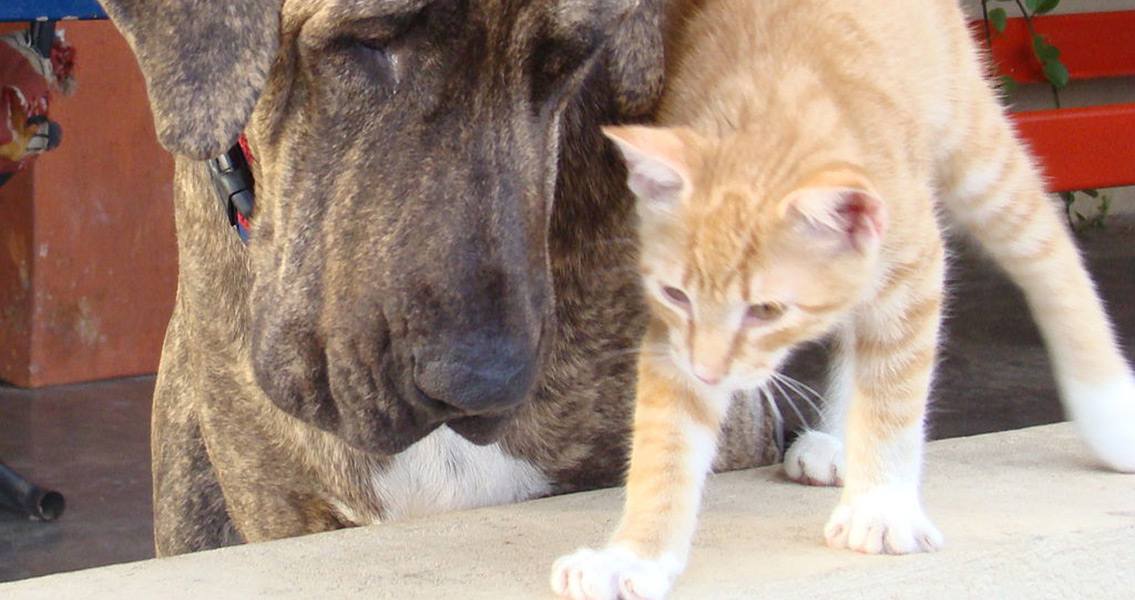<![CDATA[The dog family as a separate group of species is widely believed to have originated in North America, since the oldest known dog-like fossil, around 40 million years old, was found in Texas. Around 22 million years ago, according to Heritage Daily, dogs and dog-like carnivores reached their maximum biodiversity, with more than 30 species roaming the continent. Then cats came from Asia. According to a new study by an international team of researchers, the entry of felids (cat-like animals) was a major contributing factor to the demise of the majority of dog species, with just nine of them surviving to modern times. The team, including scientists from the University of Gothenburg, the University of Lausanne, and the University of Sao Paulo, examined more than 1,500 fossils from 120 dog species plus another 744 fossils of 115 non-dog species, to see how their extinction rates were affected by factors such as body mass evolution, climate change and competition from other species. The method that the team used involved process-based speciation and extinction models that incorporated the process of preservation and the uncertainties associated with the age of the fossils, the researchers write in their paper, published in PNAS. This method, they say, allowed them to test the effect of biodiversity on the extinction rates of the canid group of species, with a focus on both the passive and active roles of inter-species competition. Usually an increase in body mass is considered a factor contributing to the risk of extinction, the authors of the study note. However, although there was evidence that some of the canid species living in North America gradually increased in size, with individual species reaching 30 kg, this increase in body mass did not affect the extinction rates in any significant way. Competition from other species, and more specifically felids, did affect the extinction rates of these proto-dogs, however. As Heritage Daily points out, survival for carnivores depends on their access to and ability to catch their food. Since prey is a limited resource, competition between carnivorous species is very intense. The research team compared canid fossils not just with felid ones but also with fossils belonging to other families, including bears, so-called bear dogs, false sabre-toothed cats, and Barbourofelidae, an extinct family of carnivores. Interestingly, they found that the competition between the dog species and the four non-cat species was not particularly intense. The competition with cats species, however, was very strong. Furthermore, the felids had a more marked effect on the extinction rates of the canids than the other way round. What this suggests is that the cats were better hunters than the dogs, which may have been due to a variety of reasons. Another factor that contributed to the dying out of most of the canid species inhabiting the North American continent was their failure to “originate”, that is, the insufficient rate of emergence of new species within the group of dog-like species families. The authors note that the only family that has survived to modern time, the Caninae, or dogs, foxes, coyotes, etc., displayed a positive diversification rate meaning that new species emerged within it as old ones died out. The opposite, however, was true of the other two dog-like families the team studied, the Hesperocyoninae and the Borophaginae. Both suffered great diversification rate declines, fourfold for the Hesperocyoninae around 30 million years ago and fivefold ten million years later, and threefold for the Borophaginae, around 15 million years ago. It seems likely that fierce competition from cats was one of the factors responsible for this failure of the two families to diversify and survive. For more information: “The role of clade competition in the diversification of North American canids” Image courtesy of Wikimedia Commons user: Don Wecua ]]>
Cats Brought Extinction to Dog Species in North America
